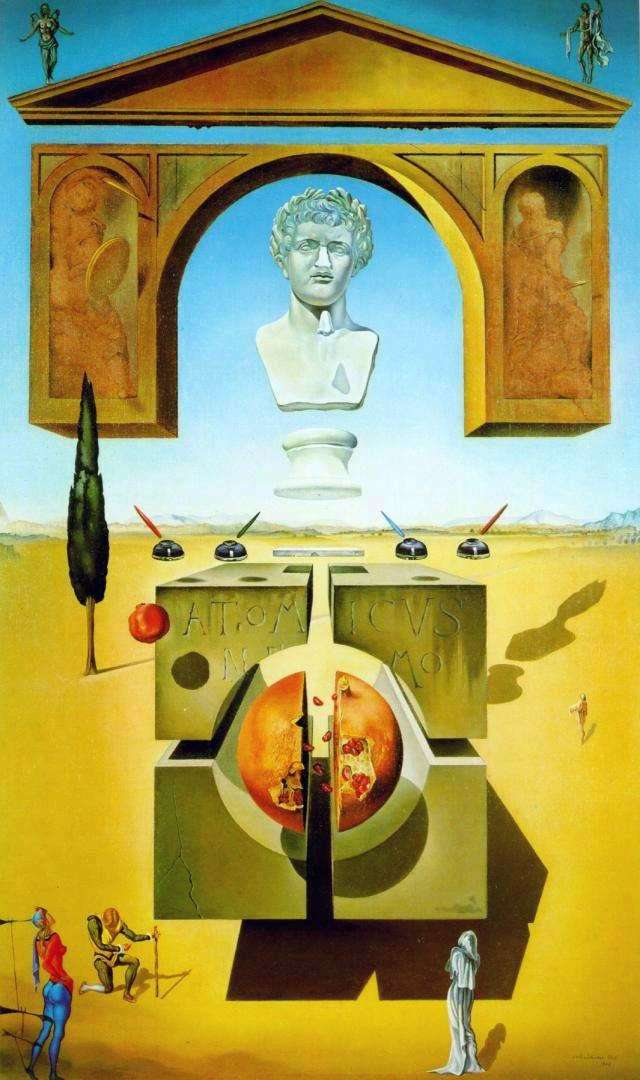
Salvador Dali is hard to call self-taught in painting. Not discounting the factor of natural giftedness or Divine genius, we must admit that the master has calculated many things in advance, measured seven times before taking the brush in hand and starting to translate the next plan in color and colors. And, of course, Dali had a clear idea of the artistic proportions and the geometry of forms. At some point in his work he even became interested in the ideas of the ancient Greek philosophers-atomists, trying to portray them in a surrealistic manner.
In the air, the portico of one of the Hellenistic temples seems to float on its own. In the center – also isolated – a bust of the unknown, crowned with a laurel wreath. Even lower – a few feathers and inkwells. Even lower – split into four equal parts, smoothly hewn on all sides of the stone monolith, on which the front can be seen an inscription on the Ancient Greek. It indicates that there is an atom before us.
His “filling”, the core – ripe, and also chopped, but already in two, the fruit of a pomegranate. Somewhere far away in the distance can be seen a mountain ridge. It still needs to be reached, around – sand and desert. People at the foot of the stone monolith – as if from different eras: the one that lifted his head up, resembles a gymnast in a leotard, and bent down in a half-bow – a young page.
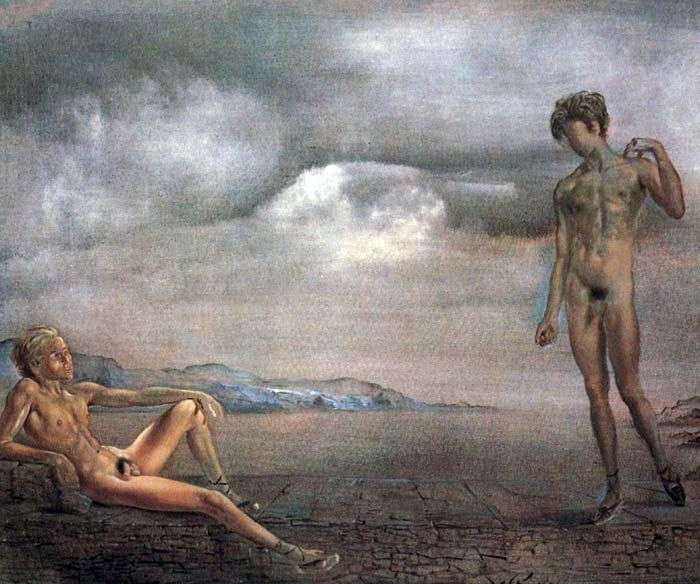 Two adolescents by Salvador Dali
Two adolescents by Salvador Dali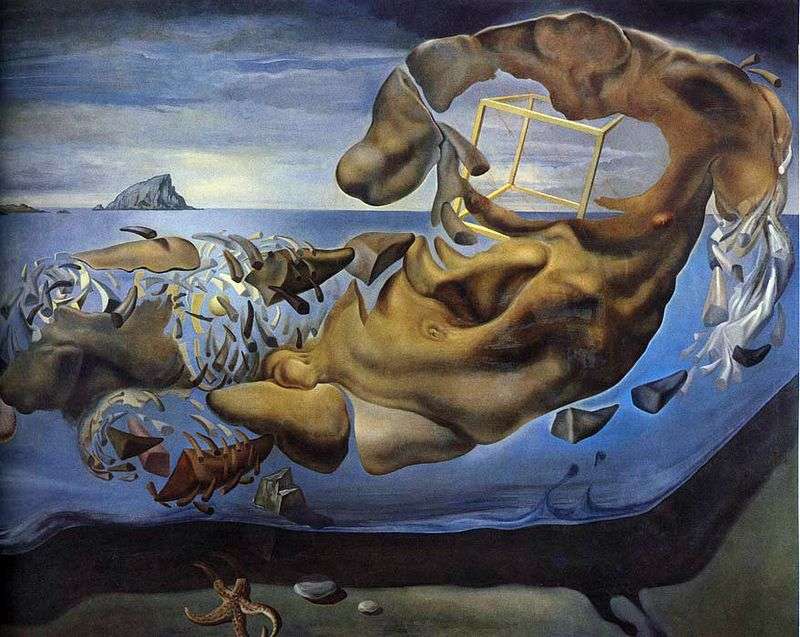 Nosorogoobraznaya figure Ilissa Fidia by Salvador Dali
Nosorogoobraznaya figure Ilissa Fidia by Salvador Dali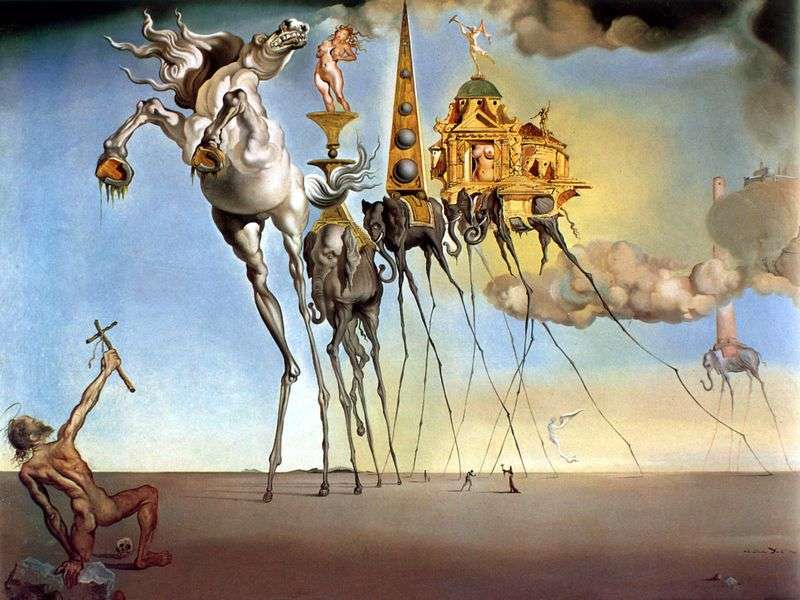 The Temptation of Saint Anthony by Salvador Dali
The Temptation of Saint Anthony by Salvador Dali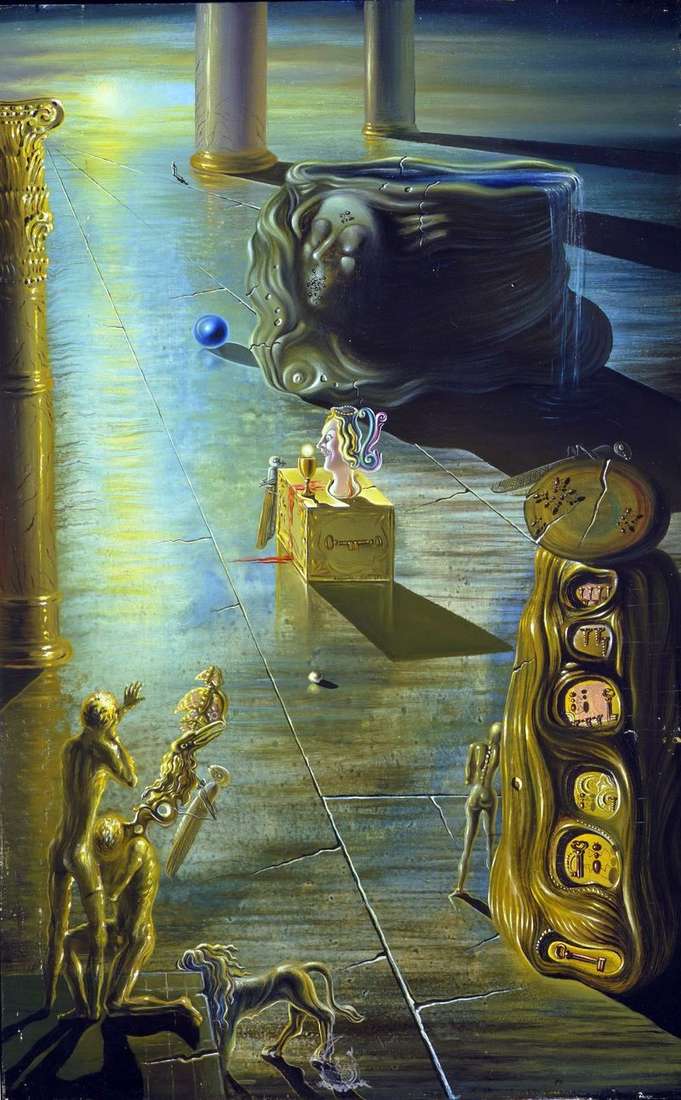 Fountain by Salvador Dali
Fountain by Salvador Dali Atavistic ruins after the rain by Salvador Dali
Atavistic ruins after the rain by Salvador Dali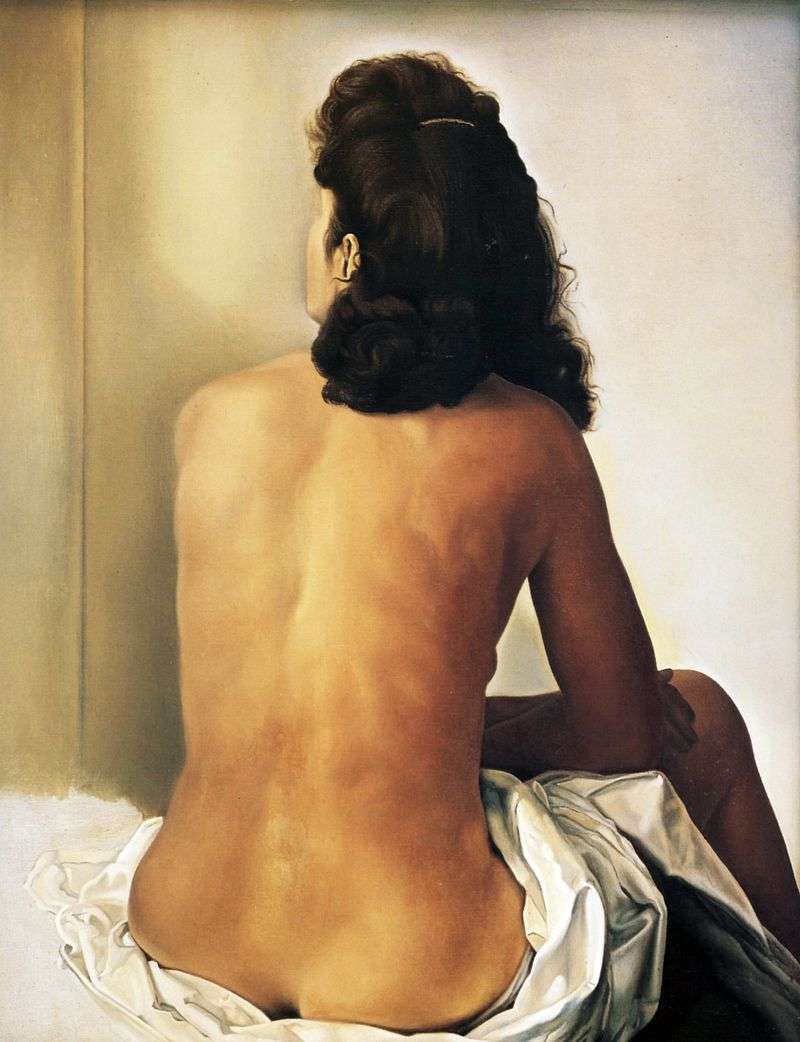 Nude Gala sitting with her back by Salvador Dali
Nude Gala sitting with her back by Salvador Dali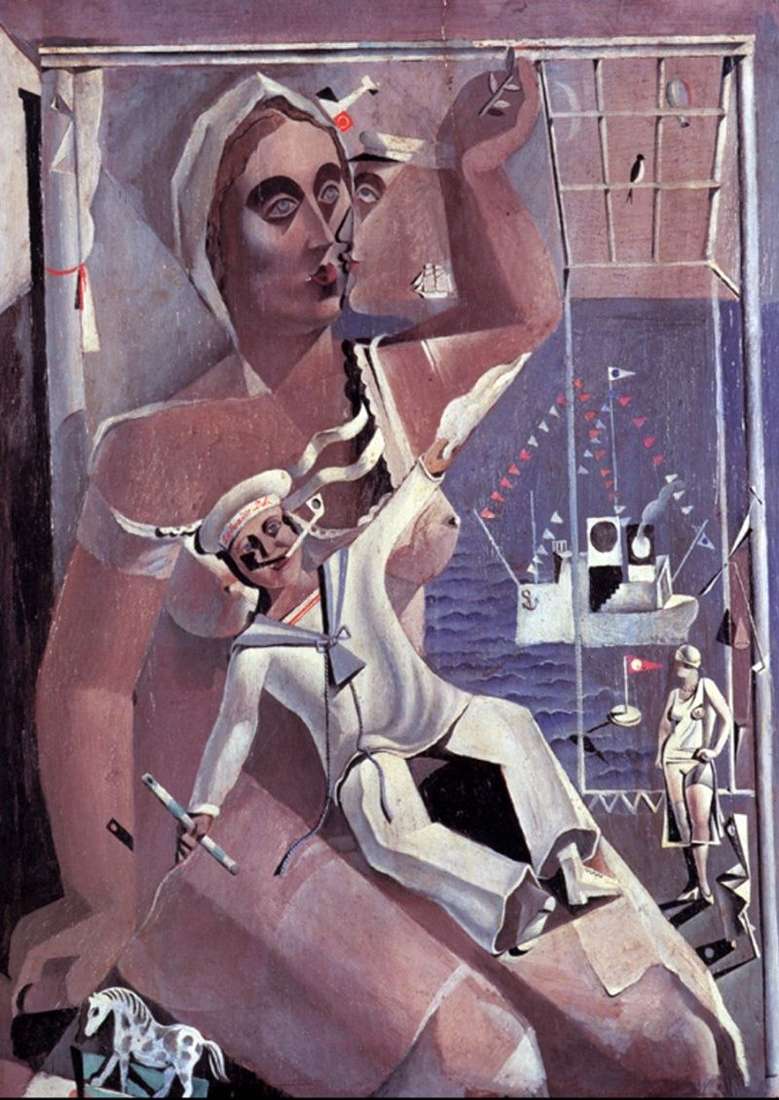 Venus and the Sailor by Salvador Dali
Venus and the Sailor by Salvador Dali A sleeping woman in the background of a landscape by Salvador Dali
A sleeping woman in the background of a landscape by Salvador Dali